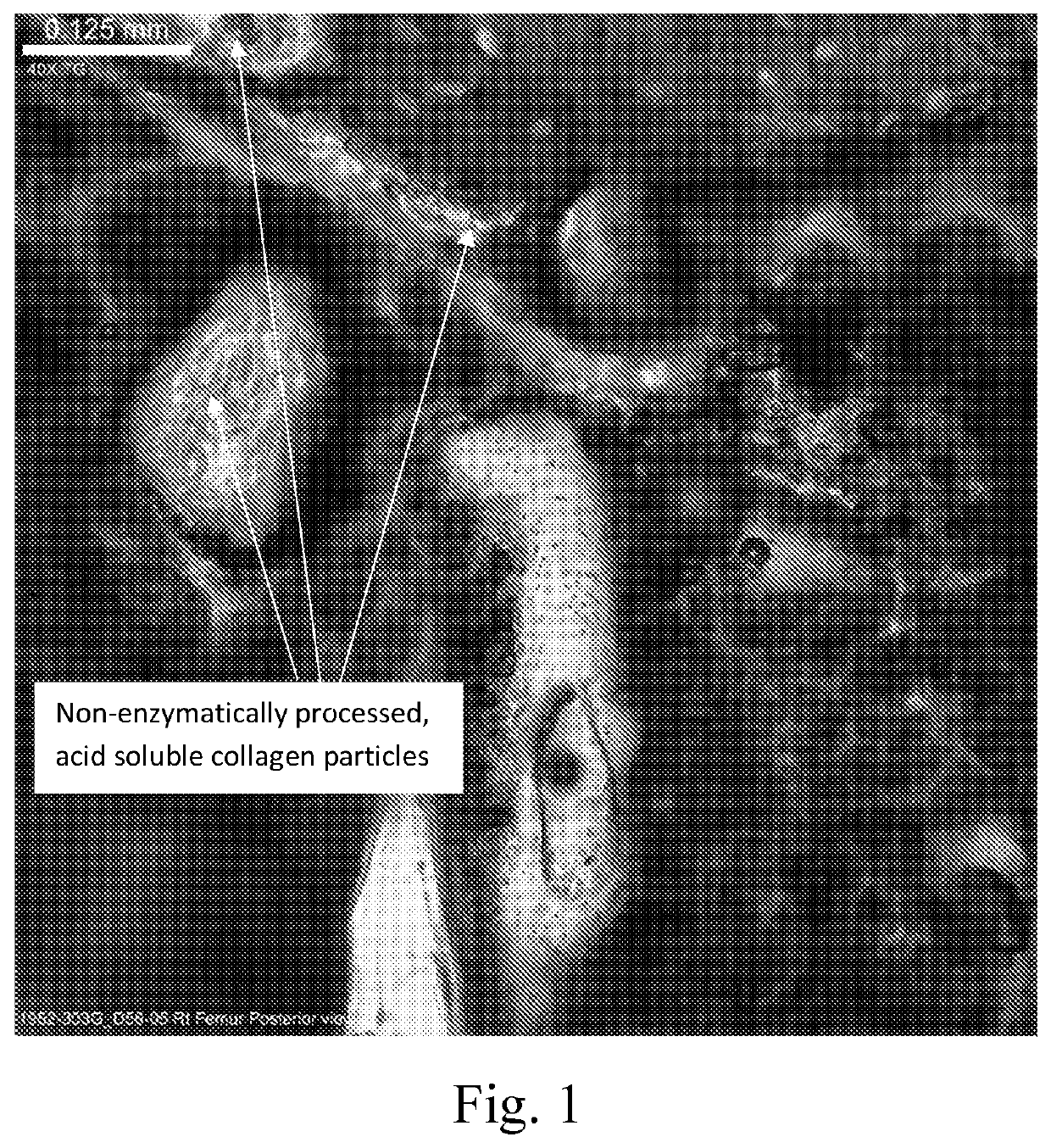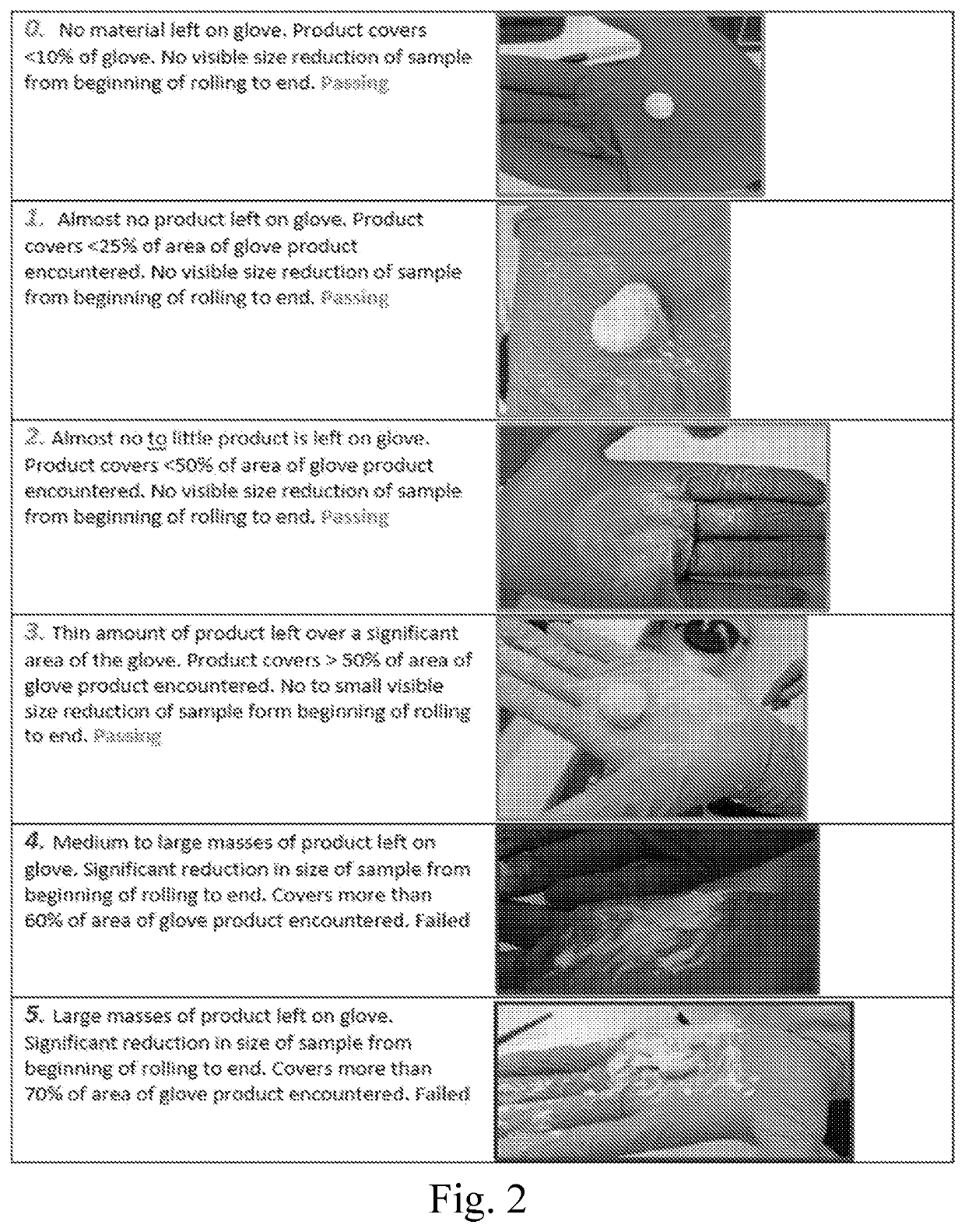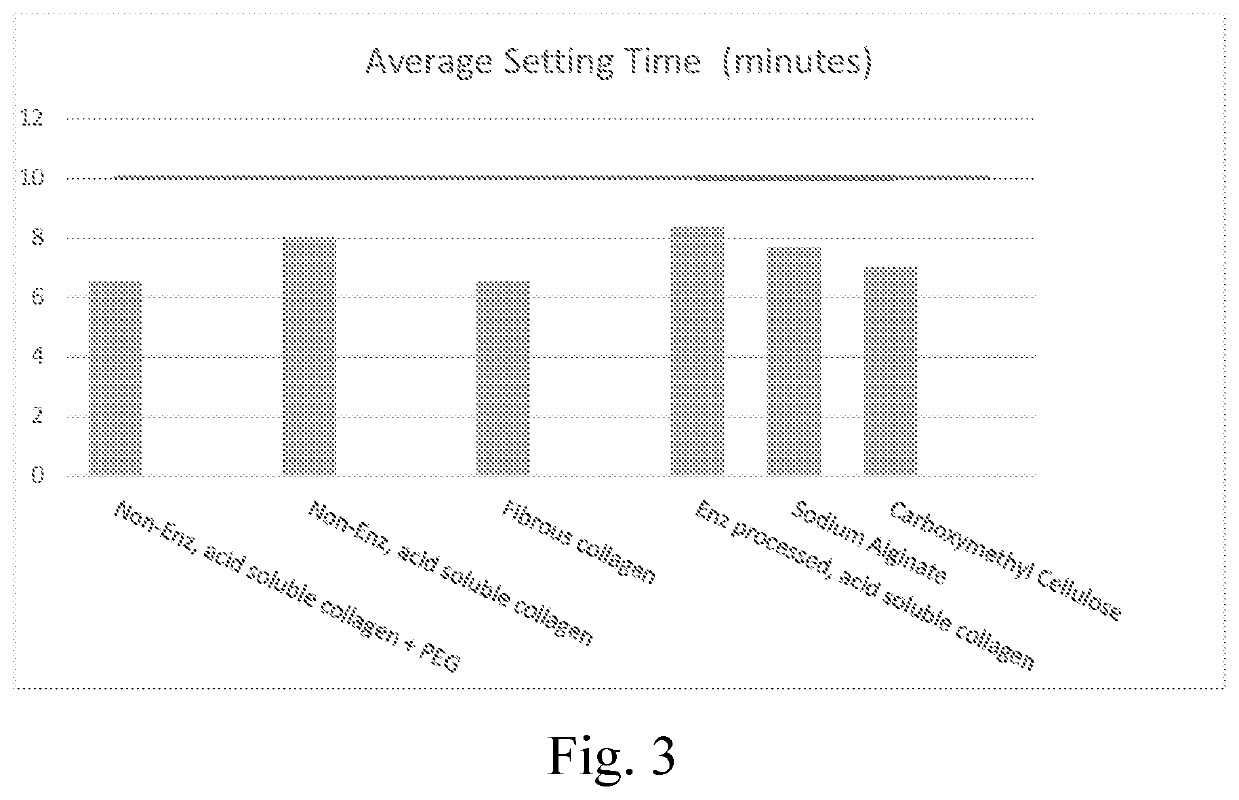Settable bone void filler
a bone void and filler technology, applied in the field of composite materials, can solve the problems of ceramic materials alone, whether superbly biocompatible or not, and may not meet all the requirements of in vivo medical devices
- Summary
- Abstract
- Description
- Claims
- Application Information
AI Technical Summary
Benefits of technology
Problems solved by technology
Method used
Image
Examples
example 1
Implantable Bone Cement Compositions
[0075]Cementitious materials suitable as bone cements are well known to those skilled in the art. Any material capable of hardening to an apatitic calcium phosphate could be utilized as a base cement formulation, to which the additive materials of the present invention may be added. The mechanisms related to the hardening of a bone cement composition into an apatitic calcium phosphate are well described in U.S. Pat. Nos. 4,518,430, 5,571,493, and 6,929,692.
[0076]The specific bone cement compositions to be used for comparison are disclosed in Table 1. The components will be combined by blending in any method known to those familiar with the art, for example, by being placed in a shaker-mixer (e.g., a Turbula™ mixer) for 30 minutes. The preferred cement composition comprises tetracalcium phosphate (TTCP), hydroxyapatite (HA), monocalcium phosphate monohydrate (MCPM), alpha-TCP (α-TCP), sodium phosphate dibasic dihydrate (SPDH), and a hydrating fluid...
example 2
Implantable Compositions According to the Invention Containing a Swelling Additive
[0080]The composition described in example 1B from Example 1 was combined with various additives, as disclosed in table 2. The additives could serve as a swelling additive example (non-enzymatically processed acid soluble collagen), while the remaining additives as comparative examples would not serve as a swelling additive (fibrous collagen, dietary, enzymatically processed, acid-soluble collagen, sodium alginate, carboxymethylcellulose (non-crosslinked)). The incorporation of the swelling additive was performed by blending the dry mixture in a shaker-mixer for 30 minutes.
[0081]The various compositions described in the examples were tested to assess the setting time, injectability and handling, with the data discussed below, and as presented in the attached figures, where the setting time assessment results are presented in FIG. 3, the injectability assessment results are presented in 4, and the handl...
example 3
Incorporation of Polyethylene Glycol into Non-Enzymatically-Produced Acid-Soluble Collagen
[0088]An amount of PEG was incorporated into the composition of Example 2A, at the rates disclosed in table 3. The PEG was obtained from a commercial supplier (Merck) and had an average molecular weight ranging from 2-10 kiloDaltons. The PEG component was incorporated into the composition by dissolving the PEG in a slurry made from the non-enzymatically processed, acid soluble collagen, which was then freeze dried and milled with a centrifugal mill to reduce the freeze dried matrix to smaller particles that one skilled in the art will recognize as readily capable of homogeneously mixing with the calcium phosphate powder blend.
[0089]
TABLE 3Non-Enz, acidComponent NamePEGsoluble collagenChemical FormulaC2nH4n + 2On + 1—Example 3A25%75%Example 3B50%50%Example 3C75%25%
PUM
 Login to View More
Login to View More Abstract
Description
Claims
Application Information
 Login to View More
Login to View More - R&D
- Intellectual Property
- Life Sciences
- Materials
- Tech Scout
- Unparalleled Data Quality
- Higher Quality Content
- 60% Fewer Hallucinations
Browse by: Latest US Patents, China's latest patents, Technical Efficacy Thesaurus, Application Domain, Technology Topic, Popular Technical Reports.
© 2025 PatSnap. All rights reserved.Legal|Privacy policy|Modern Slavery Act Transparency Statement|Sitemap|About US| Contact US: help@patsnap.com



